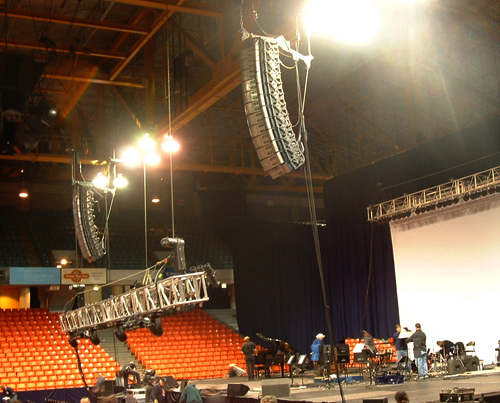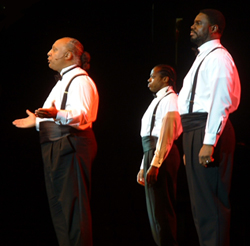“Everything old becomes new again,” as the saying goes. The entertainment industry (like rust) never sleeps.
Old forms are being upgraded for the 21st century audience. Chariot races = NASCAR; tap dancing = stomp; wandering minstrel = John Mayer; court jester = Chris Rock.
You get the idea.
One of the oldest forms of musical concerts is opera. The first was Daphne, performed in 1598 in Florence, which established the form of early 17th century Italian opera. It became so popular that by the 1800s, the wealthy royalty of the day built dedicated concert halls for these performances.
Sound familiar? The wealthy also built “sheds” to host rock ‘n’ roll in the late 20th century and named them after the royalty of the day (insert corporate name/sponsorship here).
Every major (and some minor) city has a resident opera company and opera house. When I was a kid, I heard Jimi Hendrix at the Civic Opera House in downtown Chicago. Now, the houses with the best acoustics, seats and decor have largely become money-losing propositions due to skyrocketing costs, lack of parking, limited seating…
So a few years ago, along came a new model: the opera/arena show. Popularized by Luciano Pavarotti and his buddies Plácido Domingo, José Carreras, the “Three Tenors” took the opera market to new heights in popularity and ticket sales.
The shows usually consisted of “greatest hits” from the big guys – Puccini and Verde – with some newer works (from West Side Story or Sting) thrown in for a “middlebrow” audience. The good news is that it brought opera (or “popera” as I like to call it) to a non-elite stream of music lovers. No longer were subscription seats and a tux/mink/limo required to enjoy this music in live form.
During this time, my company Gand Concert Sound, was hired to provide sound reinforcement for “Three Mo’ Tenors” – featuring veteran African-American operatic singers Thomas Young, Rodrick Dixon and Victor Trent Cook – in Chicago, with the biggest of the shows held at the UIC Pavilion, a sports/concert venue with seating for about 8,500, and, inevitably, attendant acoustic issues. We chose to go in with our NEXO GEO T line array rig.

Flashback: when I was a guitarist back in the early 1970s, our band was on a triple-bill college show headlined by Orleans, which had a hit song titled “Dance with Me.” The audience came for them. A prog rock band from Indiana called Ethos was second. They had a big PA – that’s how they got on the bill. My wife was a student at the college – that’s how we got on the bill.
The sound guy for Ethos had a half-track tape machine with 10 bands of sine waves in octaves. He would play it through the PA and adjust levels by ear using a Soundcraftsman 10-band graphic equalizer (an audiophile home product). It came with these neat cardboard forms that the user could cut out with scissors to “record” the EQ settings.
As Neanderthal as this seems, it worked quite well. I bought a Soundcraftsman a few months later and the rest is history. (Trivia: the guitarist in Ethos was Will Sharp, who went on to a top position at a little ol’ Texas sound company called Showco.)















